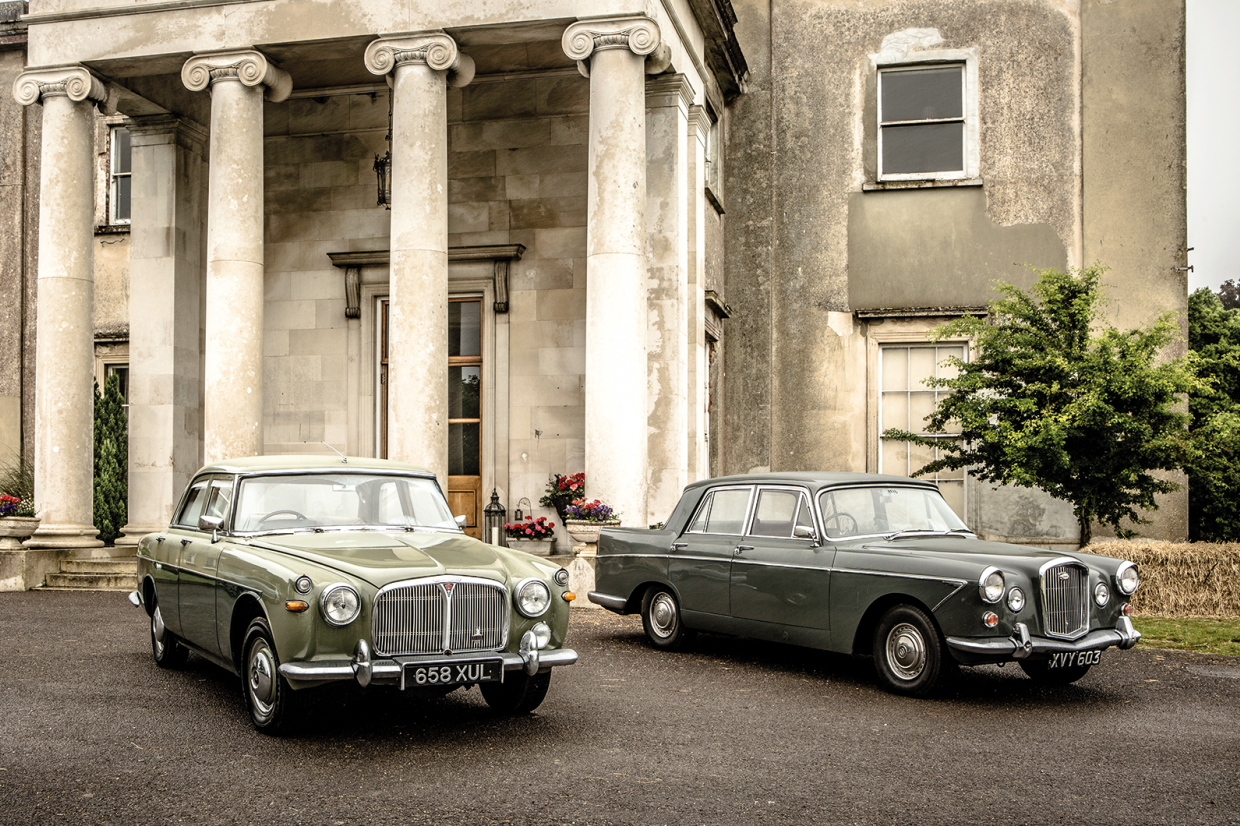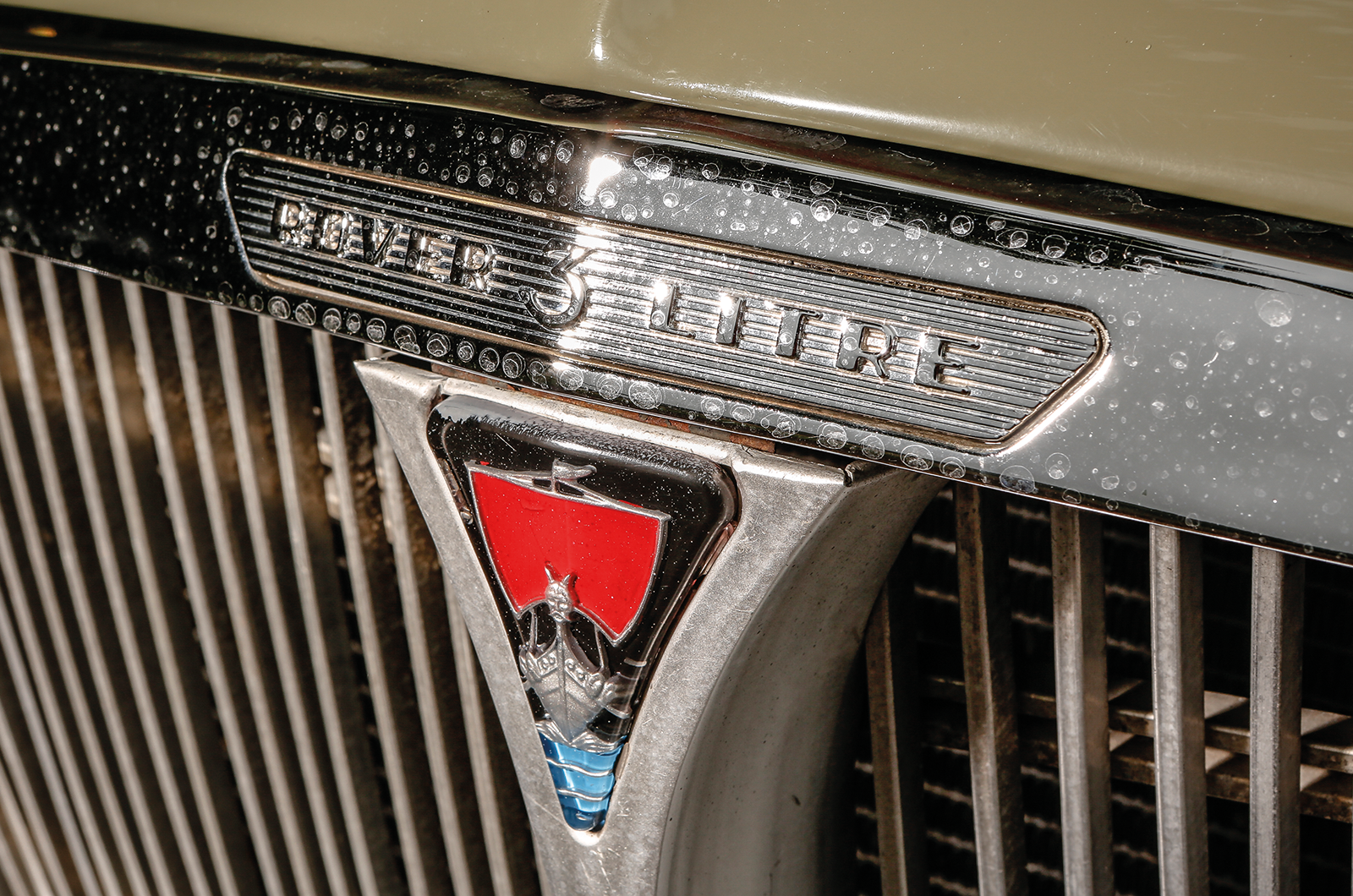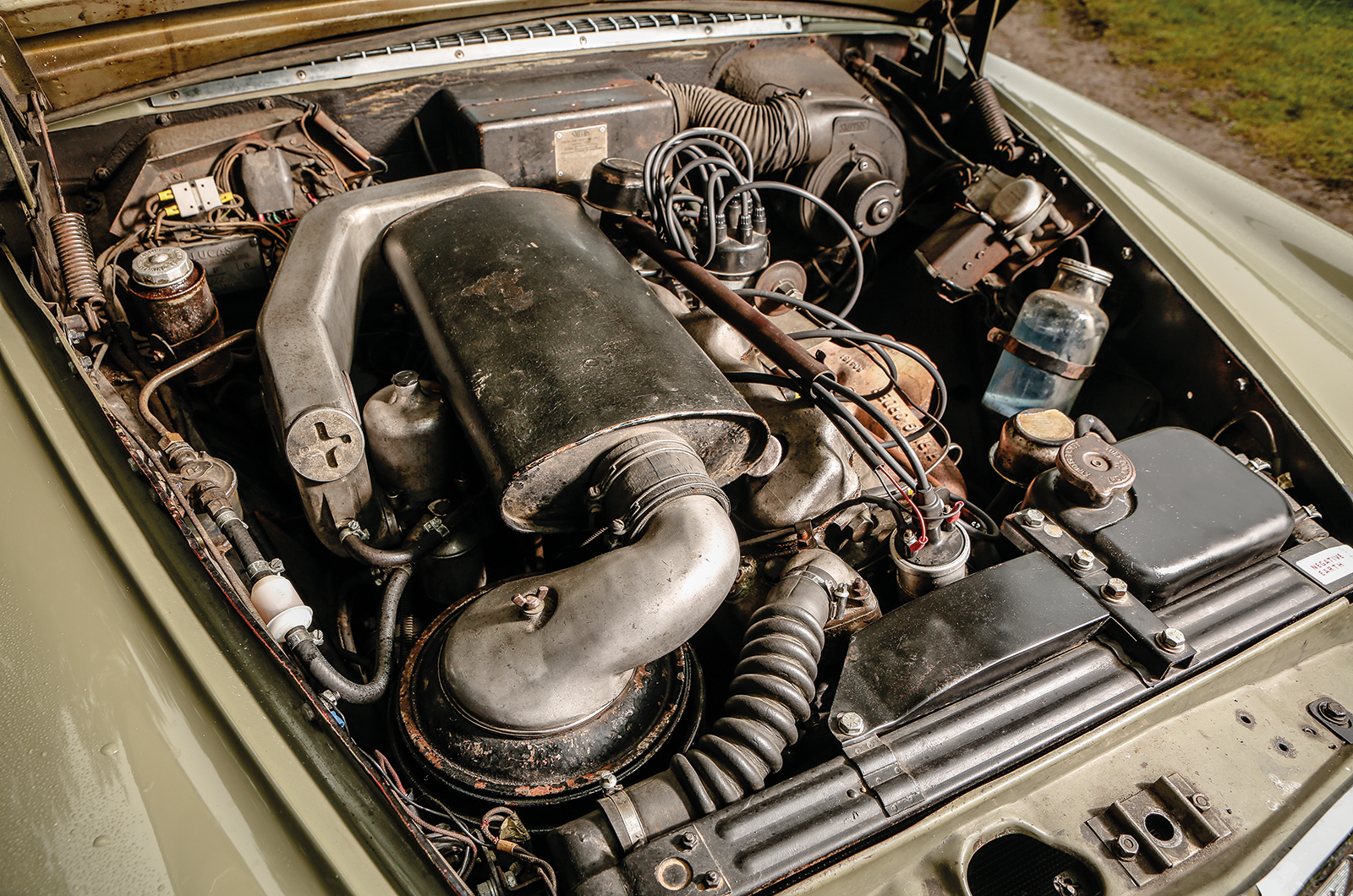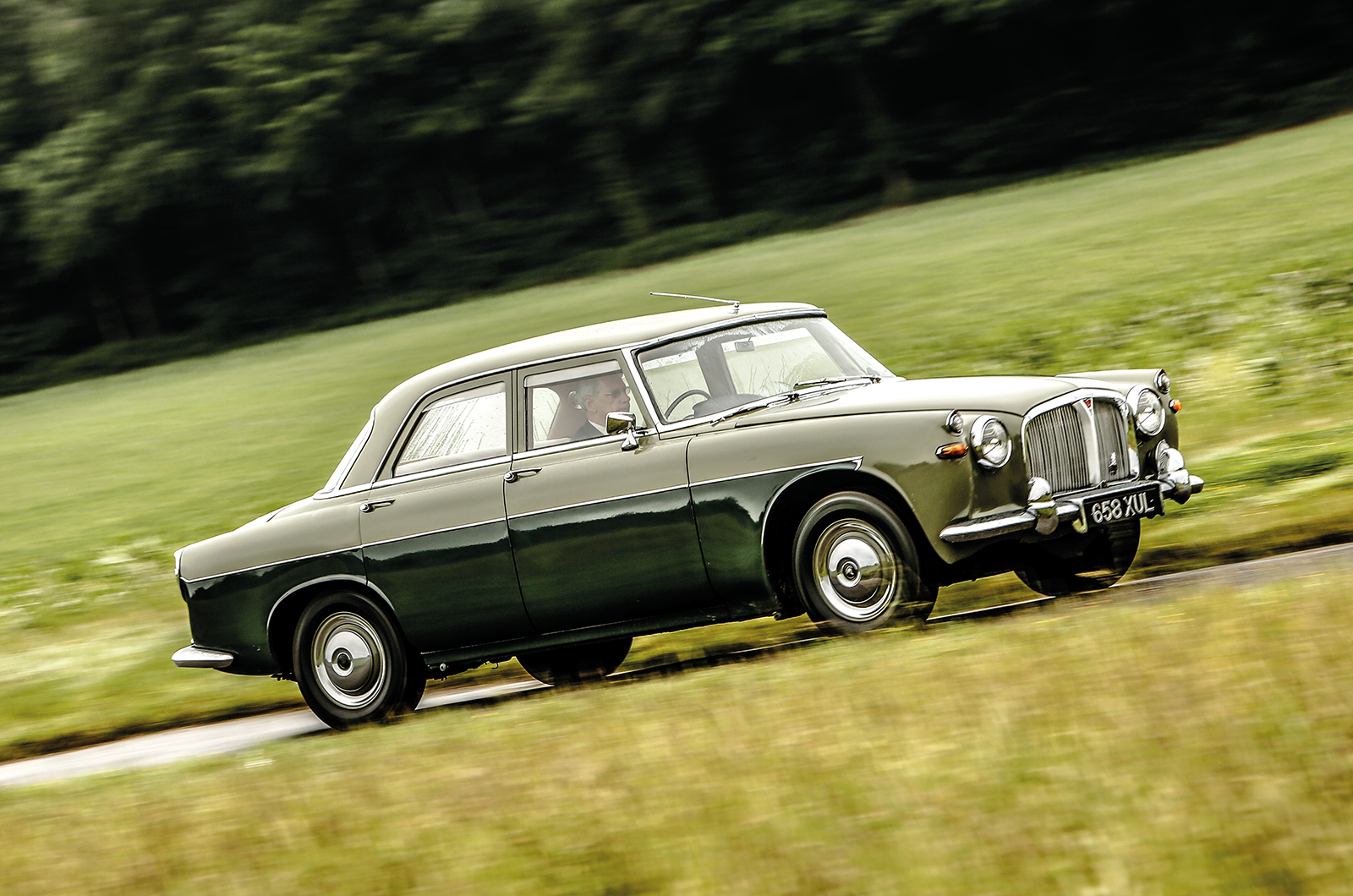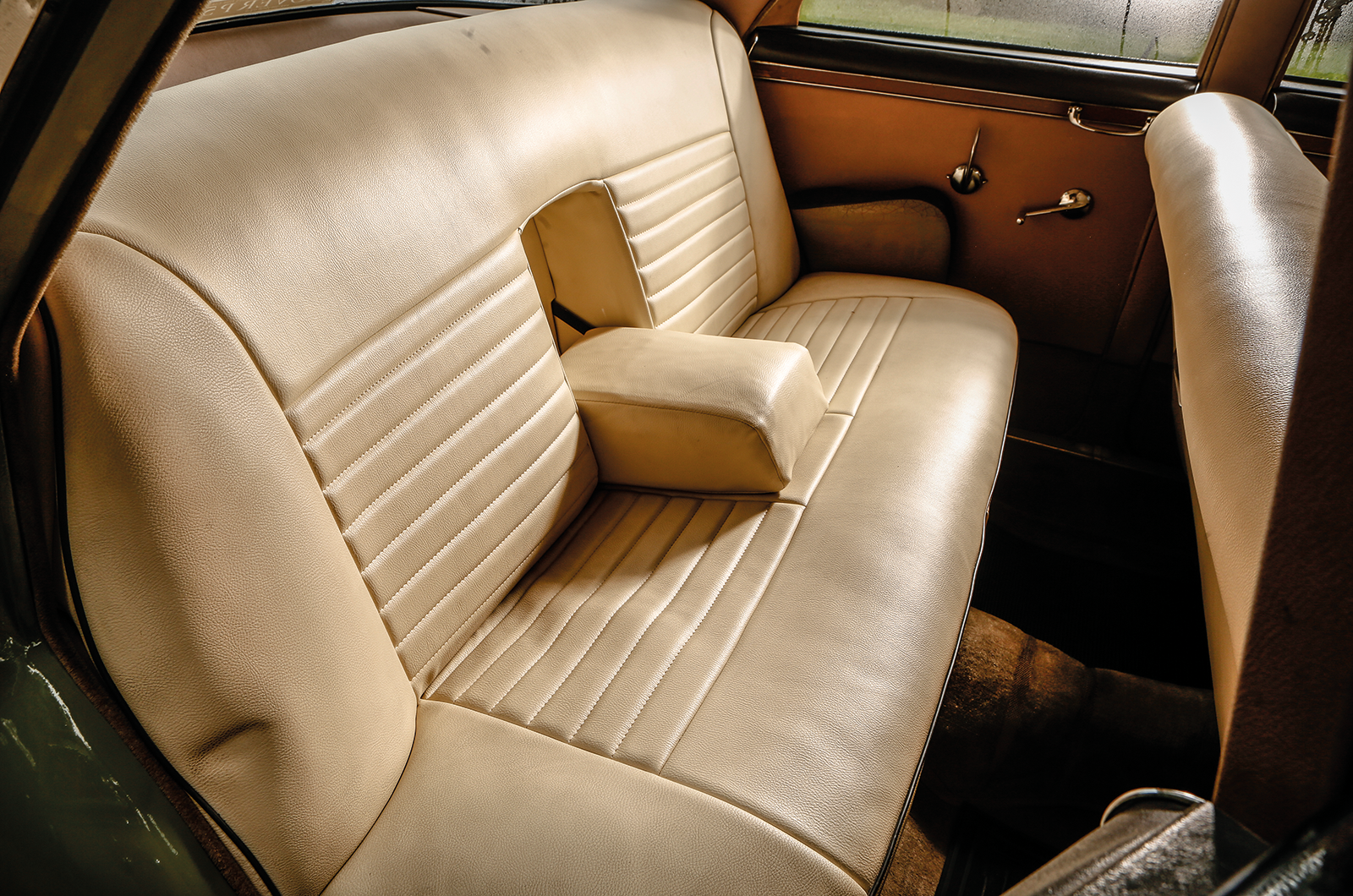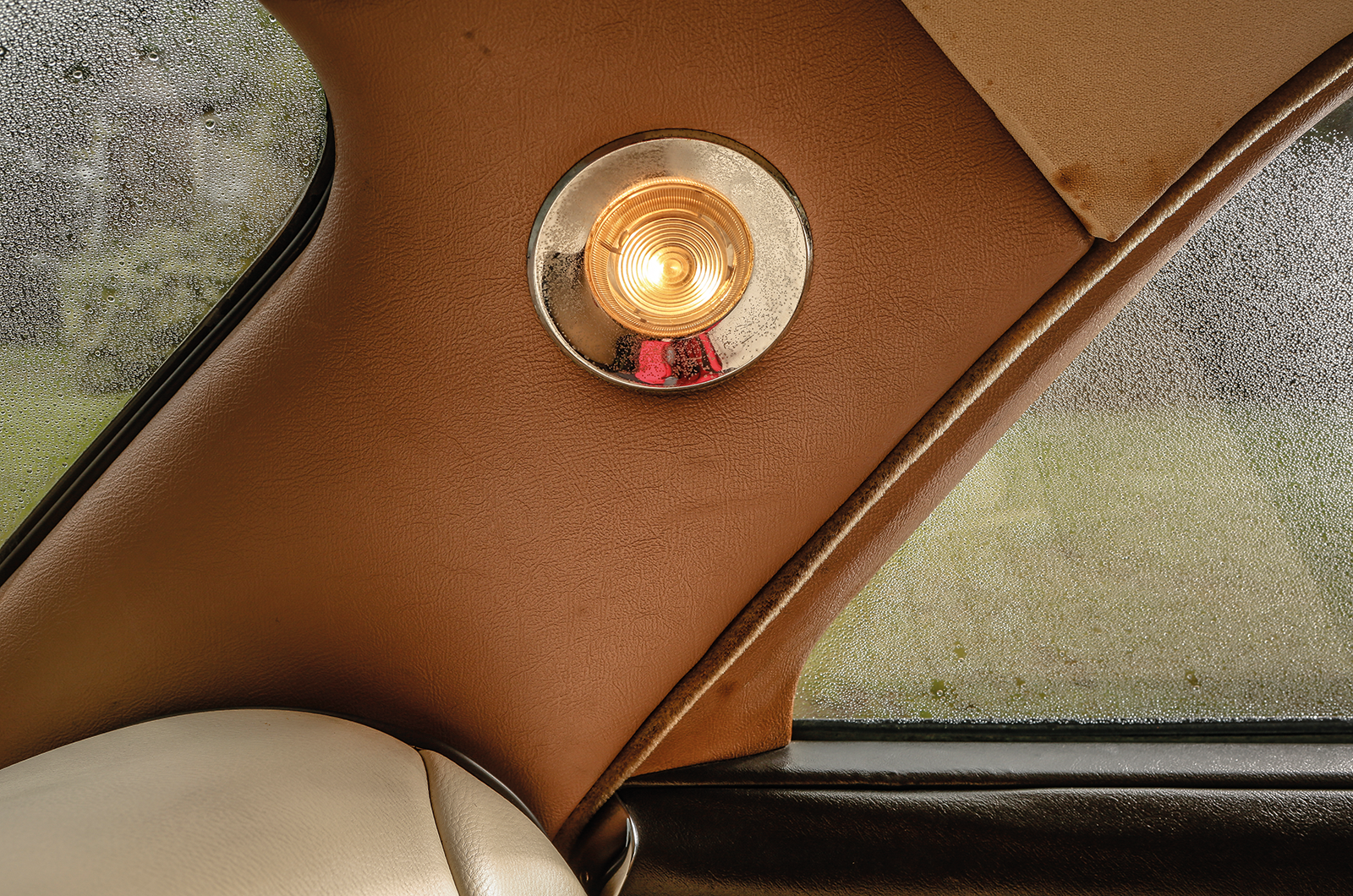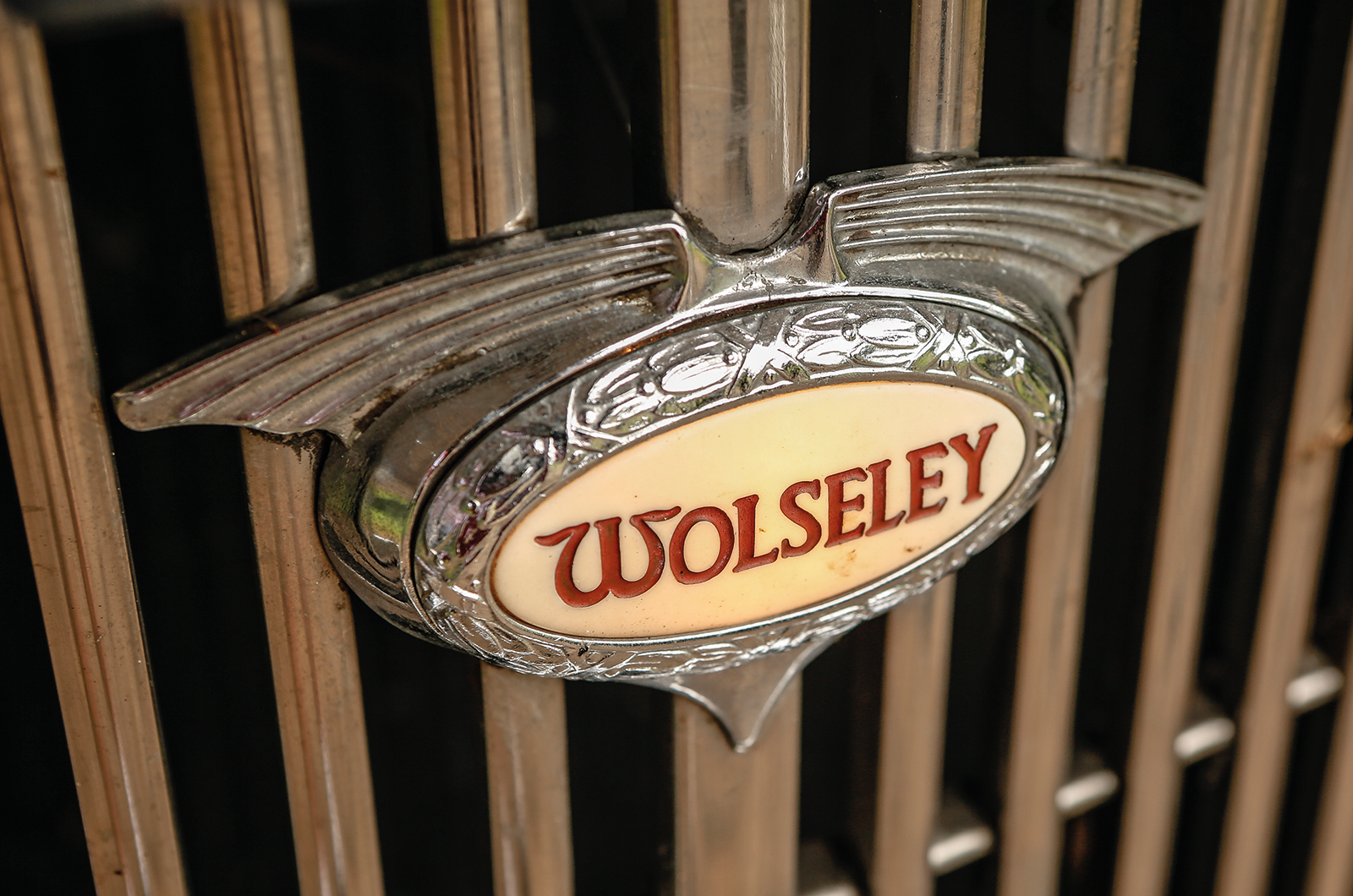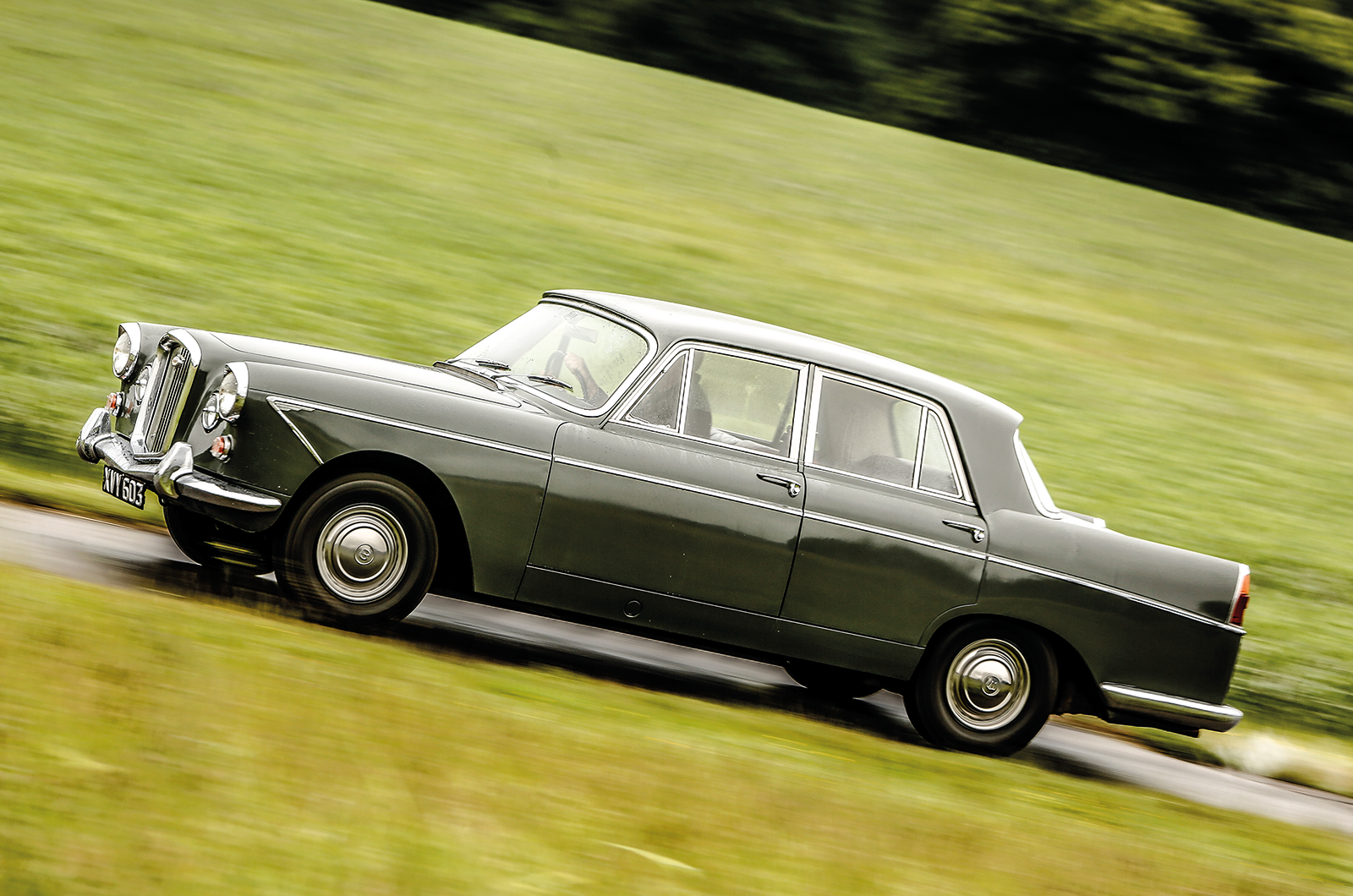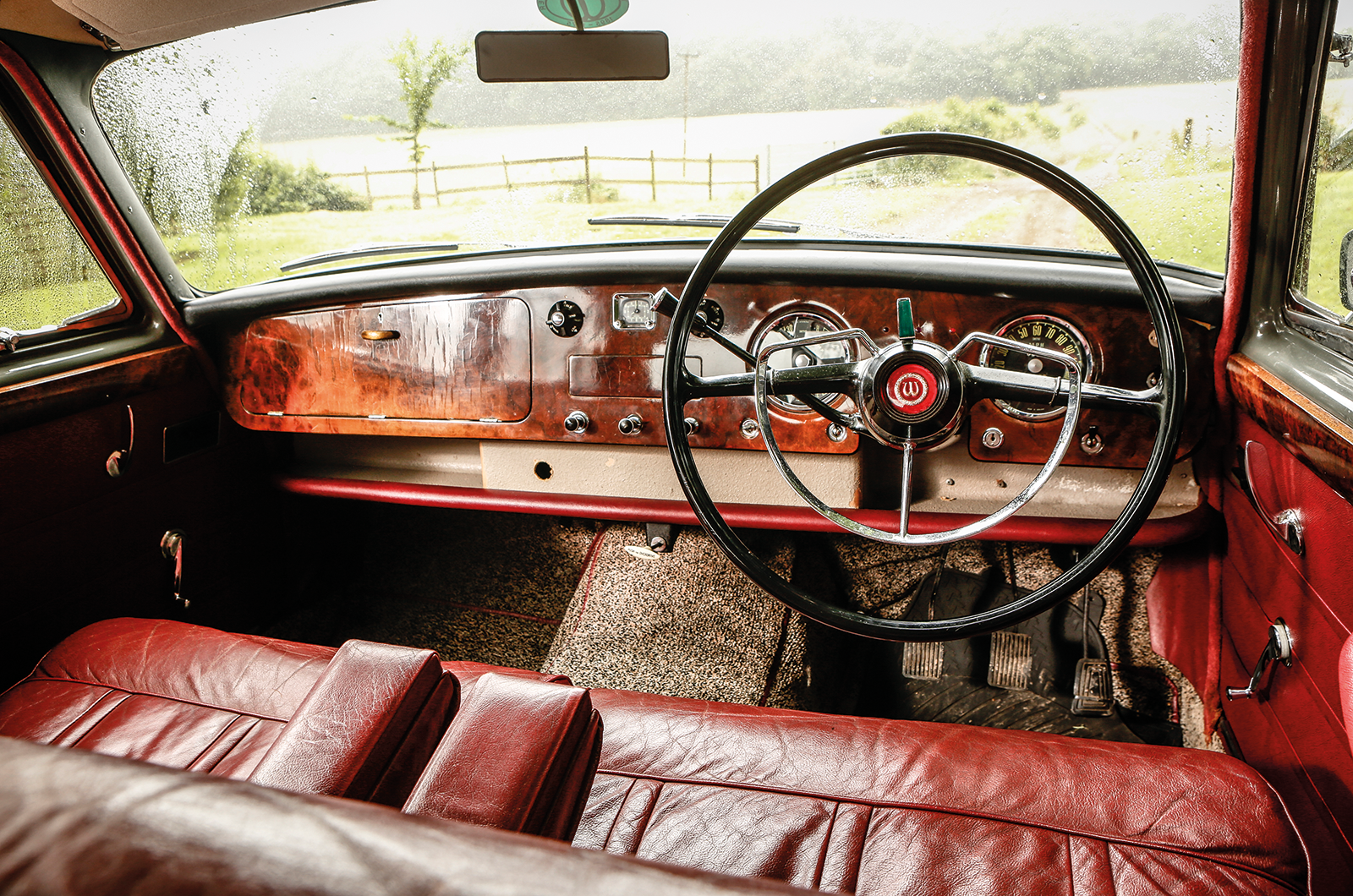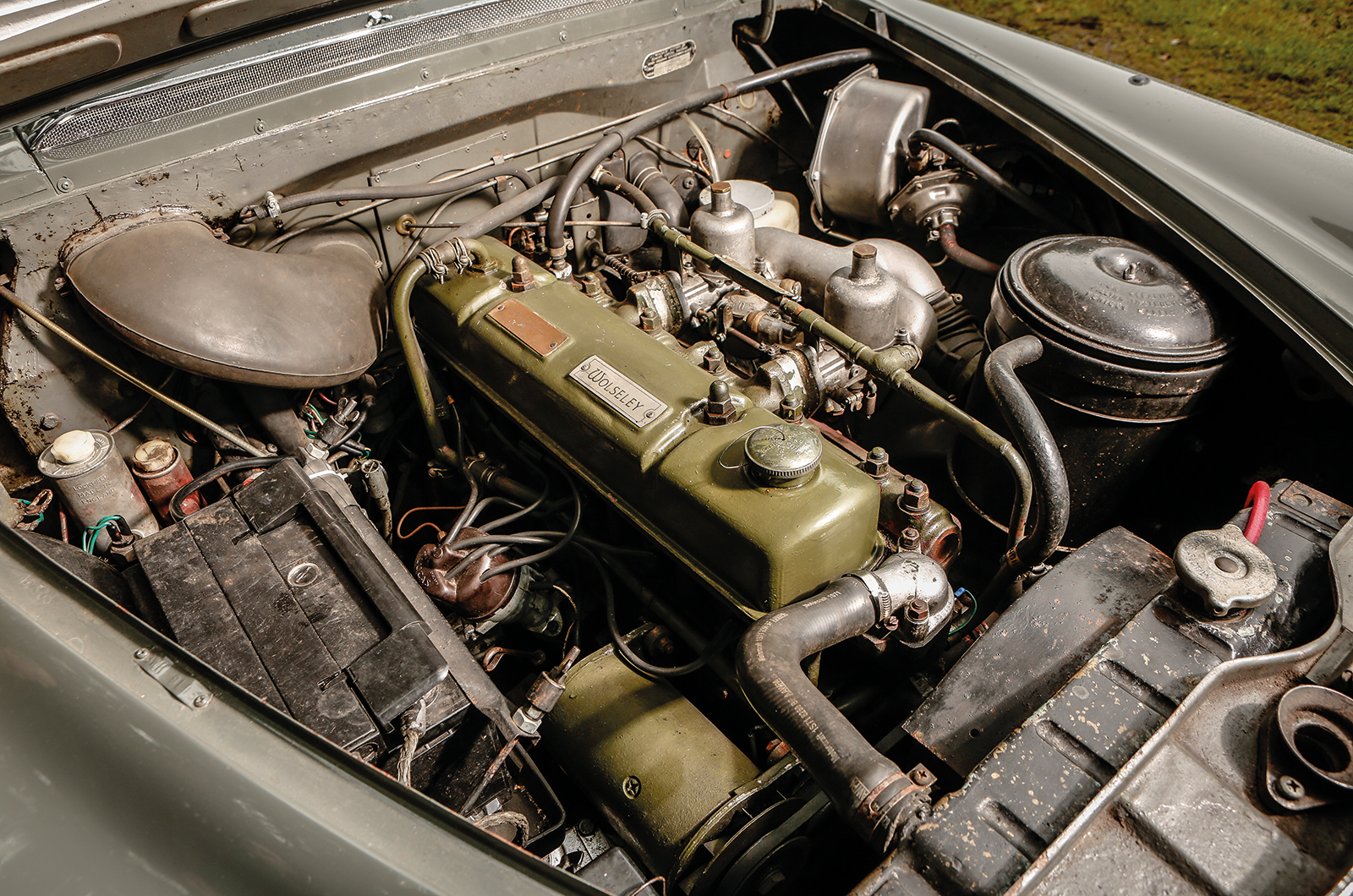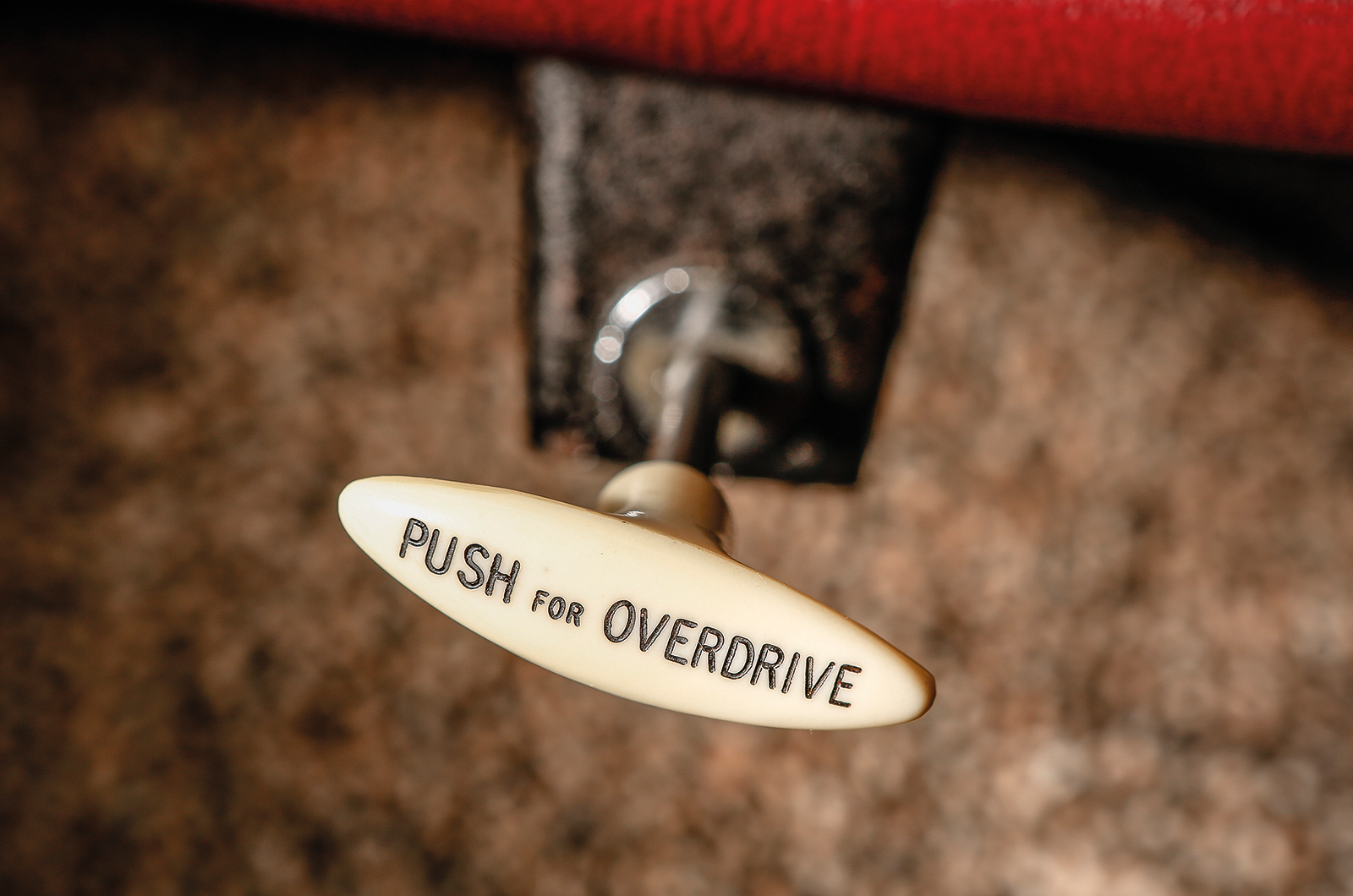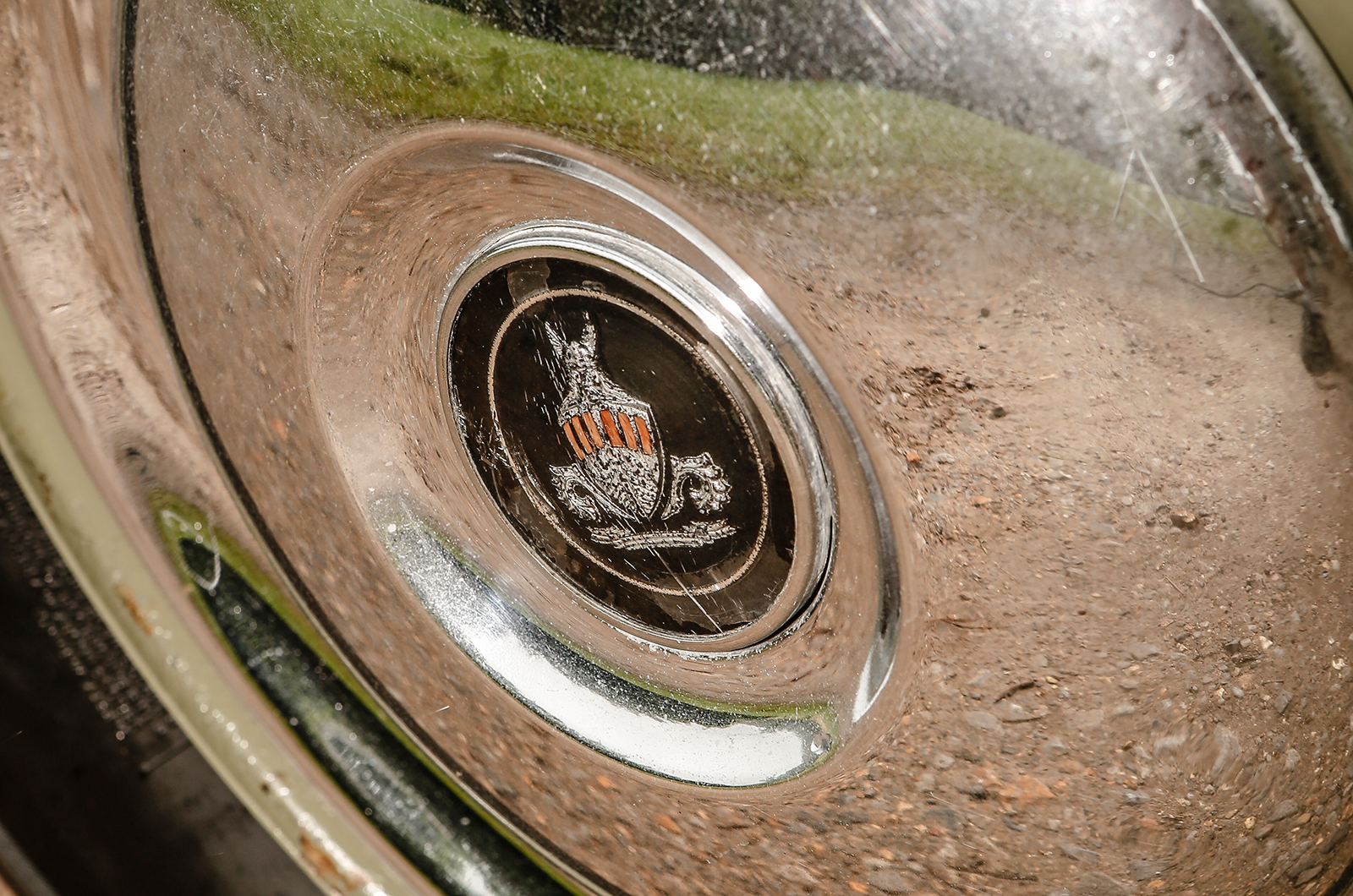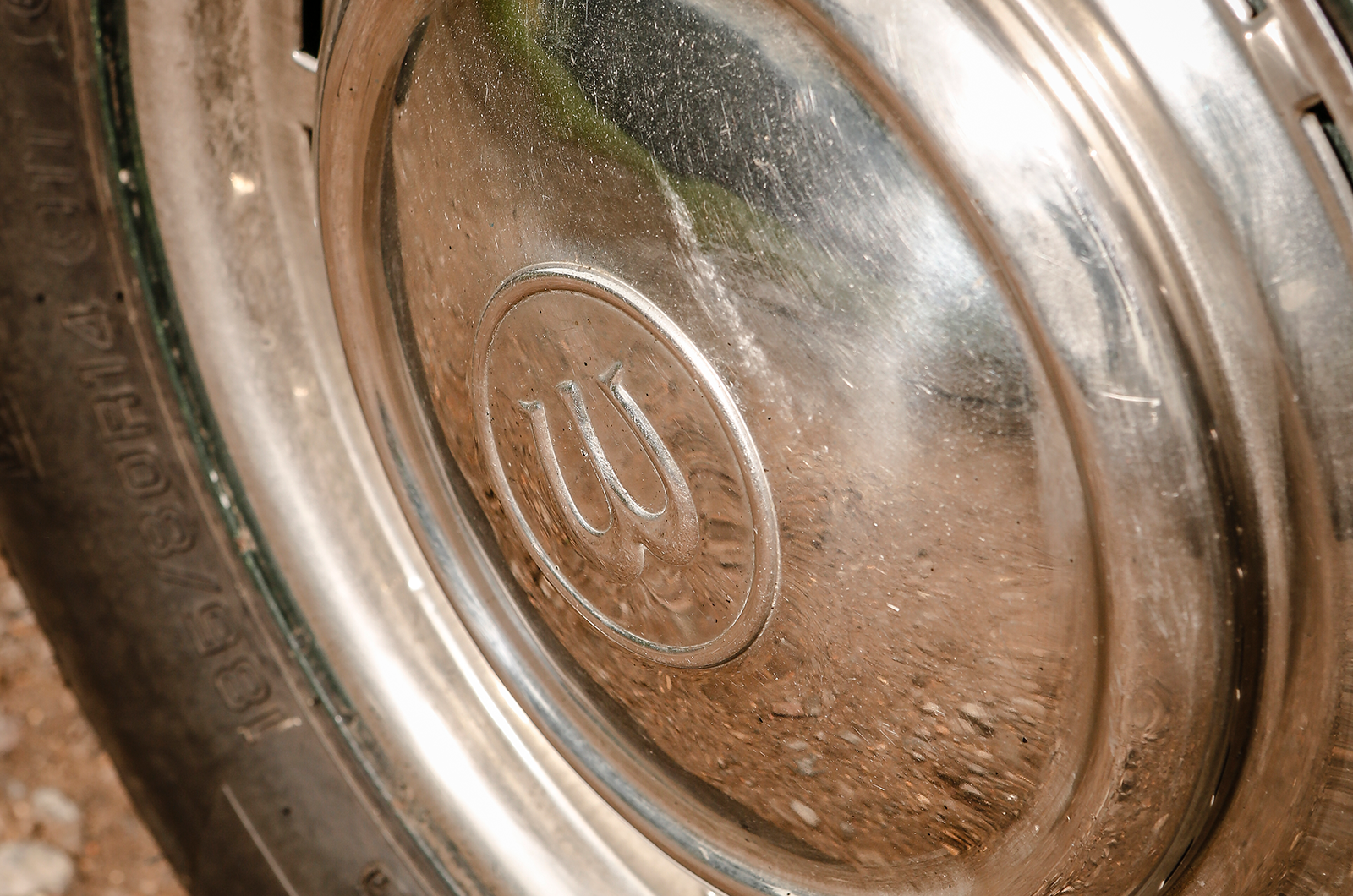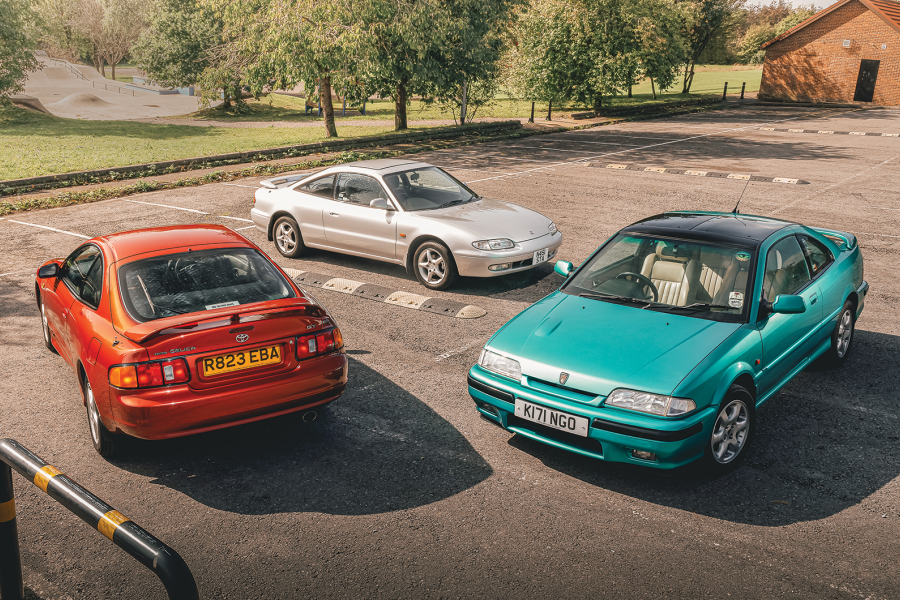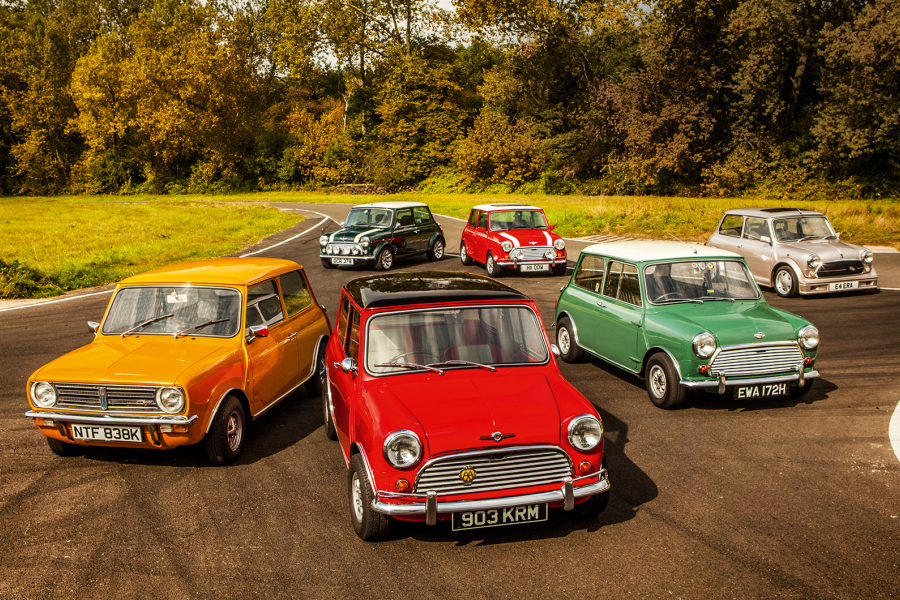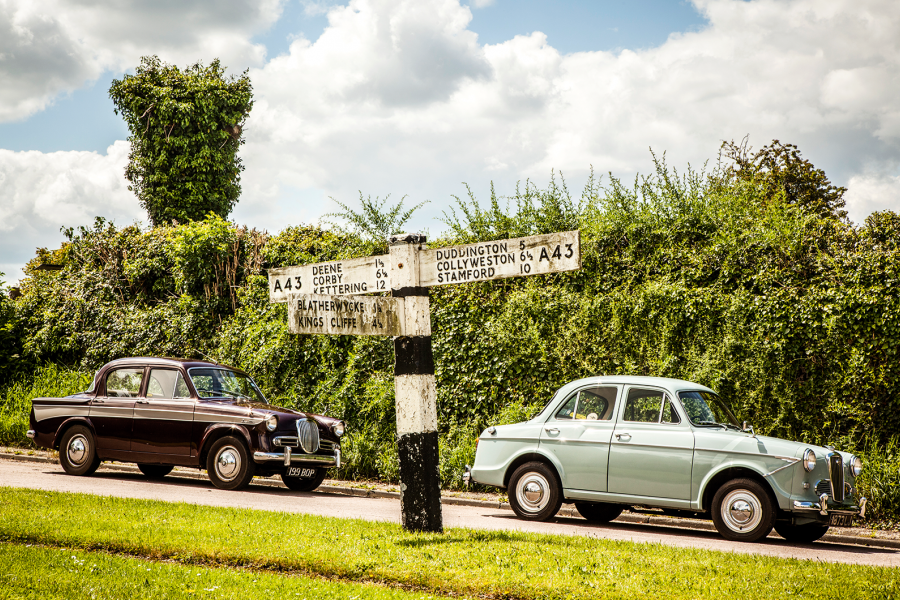So, leaving aside the class arguments of the late-’50s would the 3-Litre have been worth the extra money over the 6/99?
The coachwork of both is equally distinguished, but the Wolseley is the faster of the two and would have represented something of a bargain.
But then you start to appreciate those seemingly minor details in the Rover: the combined fuel/oil level gauge, the petrol reserve, the adjustable armrests on the front doors, the picnic table under the parcel shelf that doubles as a tool tray, and the fresh-air vents at either end of the dashboard rail.
The cumulative effect is to evoke an understated sense of well-being. Indeed, the Rover does not feel like a mass-produced car and, for that reason alone, the near-£1800 price would have been worth every penny.
Smart, sober wheels for the Rover (left) and Wolseley
Yet, if I had to choose, the Wolseley would always be the car that would hopefully reside at Chez Roberts, and not merely because of its considerable charms.
Heon Stevenson, in his superb book British Car Advertising of the 1960s, wrote of how the A99 Westminster hovered between affluent glamour and sober respectability; that balancing act is performed with even greater élan by the 6/99.
But my true purpose in selecting the Wolseley is entirely personal.
Each and every survivor is inextricably associated with a wealth of cinematic and TV memory: Timothy West barking out orders at the end of Twisted Nerve, the implausible chase at the end of Dateline Diamonds, yet another dockland heist in Gideon’s Way and virtually every Merton Park picture of the ’60s.
An Art Deco flash embellishes the Wolseley 6/99’s front wing
To select a car because it graced so many low-budget productions may seem eccentric, but a choice of classic is so often made on the most subjective of grounds.
Some buy a vehicle because of its Mille Miglia or Monte-Carlo fame; others because it conjures memories of clanging gongs and ‘Nat Cohen & Stuart Levy Present’.
All such reasons are equally valid.
Images: Tony Baker
Thanks to the Cambridge-Oxford Owners’ Club; the Rover P5 Club: Rookesbury Park Events
This was originally in our November 2016 magazine; all information was correct at the date of original publication
Factfiles
Rover 3-Litre
- Sold/number built 1958-’67/48,541
- Construction steel monocoque
- Engine iron-block, alloy-head, inlet-over-exhaust 2995cc straight-six, SU carb
- Max power 105bhp @ 4500rpm
- Max torque 164lb ft @ 1500rpm
- Transmission four-speed manual with overdrive, driving rear wheels
- Suspension: front independent, by wishbones and torsion bars, anti-roll bar rear live axle, semi-elliptic leaf springs
- Steering worm and peg
- Brakes drums (fr discs optional from ’60), with servo
- Length 15ft 6½in (4737mm)
- Width 5ft 10in (1778mm)
- Height 5ft (1524mm)
- Wheelbase 9ft 2½in (2807mm)
- Weight 3724lb (1689kg)
- 0-60mph 16.2 secs
- Top speed 97mph
- Mpg 20
- Price new £1783 5s 10d
Wolseley 6/99
- Sold/number built 1959-’61/13,108
- Construction steel monocoque
- Engine cast-iron, overhead-valve 2912cc inline-six, twin SU carburettors
- Max power 103bhp @ 4500rpm
- Max torque 158lb ft @ 2000rpm
- Transmission three-speed manual with overdrive, driving rear wheels
- Suspension: front independent, by coil springs, wishbones rear live axle with semi-elliptic leaf springs; anti-roll bar f/r
- Steering cam and peg
- Brakes discs front, drums rear, with servo
- Length 15ft 8in (4788mm)
- Width 5ft 8½in (1727mm)
- Height 4ft 11in (1498mm)
- Width 5ft 8½in (1727mm)
- Wheelbase 9ft 2in (2704mm)
- 0-60mph 14.4 secs
- Top speed 98mph
- Mpg 19
- Price new £1255
READ MORE
Wolseley 4/44: from £15 cast-off to lifelong friend
Wolseley Hornet vs Citroën Bijou: compacts with class
Saloon bar brawn: Rover P6 3500S vs Triumph 2.5 PI MkII
Andrew Roberts
Andrew is a long-time contributor to Classic & Sports Car
